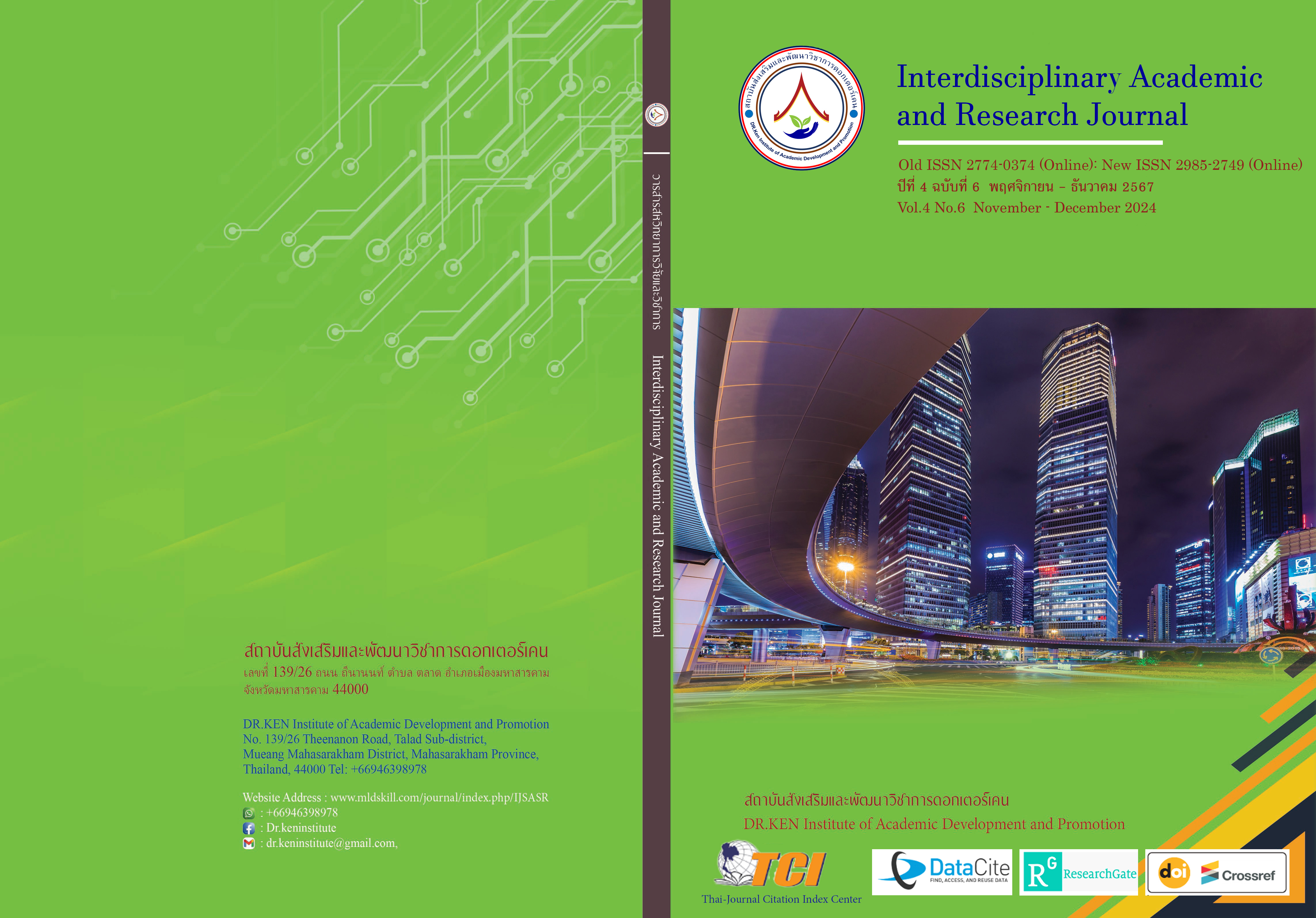The Digital Era and School Administration using The G-STAR MODEL
DOI:
https://doi.org/10.60027/iarj.2024.279463Keywords:
School Administration, G-STAR MODEL, Digital EraAbstract
Background and Aims: G-STAR MODEL School Administration is a form of School Administration in the Digital Era, this article aims to present important concepts for the digital age and G-STAR MODEL school administration in order to be in line with the many and rapid changes occurring in schools. Administrators need to have digital skills, which are important tools and methods for managing schools in the digital era. It is the greatest challenge in educational administration in a changing and dynamic world. Education must adapt to the changes of being a dynamic that cannot be stopped so that it can travel into the future the world is moving towards. The objective of this article is to study the digital age and school administration using the G-STAR MODEL model.
Methodology: This article is a documentary study and uses content analysis for analysize data.
Result: School administrators should understand, develop yourself to be ready for information technology in the digital system. School Administration using the G-STAR MODEL, Administrators should have the following management sequence: 1) G (GOAL) is what the school sets goals and what it dreams to achieve. 2) S (Student Standard) is the standard for student quality. Both in terms of academic achievement innovation and desirable characteristics. 3) T (Teaching & Learning Management) is learning management that focuses on students. It is a process of organizing teaching and learning according to the standards and indicators of the school curriculum. 4) A (Administration & Action) is the management of the entire system. It is the organization of the quality management system of the school. 5) R (Result Base Management) is management that focuses on administrative results. In response to future education, including the development of human resources that will grow to be an important force for the country in overall economic and social development.
Conclusion: To efficiently manage instructional procedures, student standards, and educational objectives, school administrators should improve their IT readiness and make use of the G-STAR MODEL. This all-encompassing strategy guarantees result-based administration and quality management, enabling students to play a crucial role in the economic and social advancement of the nation.
References
วิทยาธร ท่อแก้ว. (2564). หลักสูตรนวัตกรรมการสื่อสารทางการเมืองและการปกครองท้องถิ่น สาขาวิชา นิเทศศาสตร์ มหาวิทยาลัยสุโขทัยธรรมาธิราช. นนทบุรี: มหาวิทยาลัยสุโขทัยธรรมาธิราช
สุกัญญา แช่มช้อย. (2562). การบริหารสถานศึกษาในยุคดิจิทัล. กรุงเทพฯ: โรงพิมพ์แห่งจุฬาลงกรณ์มหาวิทยาลัย
สุจรรยา ขาวสกุล. (2560). ผู้บริหารสถานศึกษายุคดิจิทัล. ในรายงานสืบเนื่องการประชุมวิชาการและการนําเสนอ ผลงานวิจัยระดับชาติครั้งที่ 3, 138-148. กรุงเทพฯ: มหาวิทยาลัยหอการค้าไทย.
อนันต์ วรธิติพงศ์. (2561). การศึกษารูปแบบดิจิทัลเทคโนโลยีเพื่อการศึกษาสำหรับการศึกษาขั้นพื้นฐาน. Veridian E-Journal, Silpakorn University. 11(2), 1200-1215.
เอกชัย กี่สุขพันธ์. (2566). การบริหารสถานศึกษายุคดิจิทัล (School Management in Digital Era). Retrieved from: https://www.trueplookpanya.com/dhamma/content/52232
Fullan, M., & Langworthy, M. (2014). A Rich Seam: How New Pedagogies Find Deep Learning. Pearson.
Johnson, L., Adams Becker, S., Estrada, V., & Freeman, A. (2015). NMC Horizon Report: 2015 Higher Education Edition. The New Media Consortium.
Schwab, K. (2016). The Fourth Industrial Revolution. World Economic Forum.
Selwyn, N. (2014). Digital Technology and the Contemporary University: Degrees of Digitization. Routledge.
Shepherd, G. M. (2004). The synaptic organization of the brain. 5th ed. Oxford University Press. https://doi.org/10.1093/acprof:oso/9780195159561.001.1
Downloads
Published
How to Cite
Issue
Section
License
Copyright (c) 2024 Interdisciplinary Academic and Research Journal

This work is licensed under a Creative Commons Attribution-NonCommercial-NoDerivatives 4.0 International License.
Copyright on any article in the Interdisciplinary Academic and Research Journal is retained by the author(s) under the under the Creative Commons Attribution-NonCommercial-NoDerivatives 4.0 International License. Permission to use text, content, images, etc. of publication. Any user to read, download, copy, distribute, print, search, or link to the full texts of articles, crawl them for indexing, pass them as data to software, or use them for any other lawful purpose. But do not use it for commercial use or with the intent to benefit any business.
















.png)


